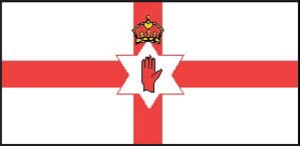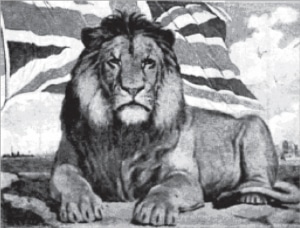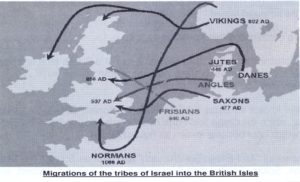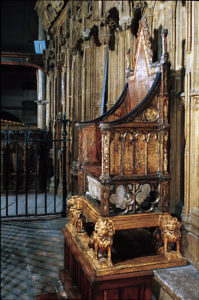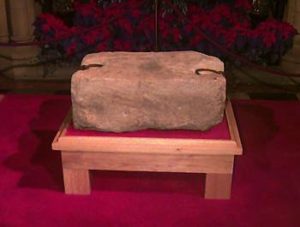THE TRUE ROOTS AND ORIGIN OF THE SCOTS – (3)
A research summary and pointers toward further research
“Wherever the pilgrim turns his feet, he finds Scotsmen in the forefront of civilization and letters. They are the premiers in every colony, professors in every university, teachers, editors, lawyers, engineers and merchants- everything, and always at the front.”- English writer Sir Walter Besant
“The mystery of Keltic thought has been the despair of generations of philosophers and aesthetes …He who approaches it must,I feel, not alone be of the ancient stock … but he must also have heard since childhood the deep and repeated call of ancestral voices urging him to the task of the exploration of the mysteries of his people … He is like a man with a chest of treasure who has lost the key” – (The Mysteries of Britain by L Spence)
A famous old work (known as Gough’s Camden’s Britannia) by William Camden on the history of the British Isles was published in the 18th century which recorded that Calcol migrated out of Egypt to Ulster via Spain.(20) He was appointed to be the Clarencieux King-at-arms in 1597 and died in 1623.
This work went through many editions and was eventually enlarged by Richard Gough to include further discoveries. He published it in three volumes in 1789 which included maps and copper plates. Further updates led to it being published in four volumes in 1806.
Surely there can be no doubt that the lberi or the Hibernians were none other than the people descended from Calcol and Zarah. The Leabhar Gadhala (= Book of Conquests) states that these lberii were the earliest inhabitants of Ireland. Hibernia is the Latin form of Iberne or Erne. The book also refers to descendants of Magog who occupied the land, after the Noahician flood (section 122). Although garbled like so much ancient mythology, the book nevertheless contains truths.
Keating’s famous The History of Ireland similarly relates that Mongoloids were amongst the earliest settlers in the isles after the flood known as the Partholanians and later the Nemedians.(21) They were followed by Hamites (the Fomorians – probably descendants of Canaan). The ancient Annals of Clonmacnois confirms this who claims that the Fomorians were:
“descended from Cham, the sonne of Noeh, and lived by pyracie and spoile of other nations, and were in those days very troublesome to the whole world.”(22)
The Giant’s Gateway in Ireland (Cloch-an-na-bh-Fomharigh = causeway or stepping-stones of the Fomorians) was identified with giants and hence is also known as the “Giant’s Causeway”.
After them arrived the White Celtic Fir-Bolgs and finally the Tuatha De Danaan who brought the Lia Fail or Stone of Destiny.(23) In the ancient Book of the Genealogies by MacFirbis,
“Every one who is white (of skin) and brown (of hair), bold, honourable, daring, prosperous, bountiful in the bestowal of property, wealth, and rings, and who is not afraid of battle or combat: they are the descendants of Milesius in Erinn
“…Every one who is black-haired, who is a tattler, guileful, tale-telling, noisy… the disturbers of every council and every assembly, and the promoters of discord among the people, these are the descendants of the Firbolgs.”(24)
[(20) Gough Camden’s Britannia 1789
(21) Keating 1908:124
(22) quoted in Westwood 1985: 270-75, 289
(23) ibid: 130-31
(24) Quoted in Heron 1898: 6]
According to “The Story of the Irish Race” on the website www.ireland.org
“The Irish race of today is popularly known as the Milesian Race, because the genuine Irish (Celtic) people were supposed to be descended from Milesius of Spain, whose sons, say the legendary accounts, invaded and possessed themselves of Ireland a thousand years before Christ.
The races that occupied the land when the so-called Milesians came, chiefly the Firbolg and the Tuatha De Danann, were certainly not exterminated by the conquering Milesians. Those two peoples formed the basis of the future population, which was dominated and guided, and had its characteristics moulded, by the far less numerous but more powerful Milesian aristocracy and soldiery. All three of these races, however, were different tribes of the great Celtic family, who, long ages before, had separated from the main stem, and in course of later centuries blended again into one tribe of Gaels – three derivatives of one stream, which, after winding their several ways across Europe from the East, in Ireland turbulently met, and after eddying, and surging tumultuously, finally blended in amity, and flowed onward in one great Gaelic stream.
The possession of the country was wrested from the Firbolgs, and they were forced into partial serfdom by the Tuatha De Danann (people of the goddess Dana), who arrived later. Totally unlike the uncultured Firbolgs, the Tuatha De Dannann were a capable and cultured, highly civilised people, so skilled in the crafts, if not the arts, that the Firbolgs named them necromancers, and in course of time both the Firbolgs and the later coming Milesians created a mythology around these.
In a famed battle at Southern Moytura (on the Mayo-Galway border) it was that the Tuatha De Danann met and overthrew the Firbolgs. The Firbolgs noted King, Eochaid was slain in this great battle, but the De Danan King, Nuada, had his hand cut off by a great warrior of the Firbolgs named Sreng. The battle raged for four days. So bravely had the Firbolgs fought, and so sorely exhausted the De Dannann, that the latter, to end the battle, gladly left to the Firbolgs, that quarter of the Island wherein they fought, the province now called Connaught. And the bloody contest was over.
The famous life and death struggle of two races is commemorated by a multitude of cairns and pillars which strew the great battle plain in Sligo – a plain which bears the name (in Irish) of “The plain of the Towers of the Fomorians”. The Danann were now the undisputed masters of the land. So goes the honoured legend.” [emphasis mine]
Further details are contained within Appendix 12.
Ancient Roman historian, Ammianus Marcellinus wrote of a Gaelic tribe in Ireland “Scoti-per diversa vagentes” which described their wondering and pirate ways. They entered the British Isles several hundred years prior to Christ.
A Gaelic tribe was known as Syths and the Welsh historian, Gildes, for instance, records “the Skythic Vale” which the Clyde and Forth rivers originate. Another area they occupied is the Isle of Skye which later became known as Sgia or Syiath.
In Gaelic it is known as “An t-Eilean Sgiathanach” and later as Scotia. The Scots were also known as Scithae, Scitae, Scuitae and Scotae to the old writers.(25) Indeed, as the Greeks called the Scythians Skuthes, this should give us some clue as to the place from whence they made their way to northern Britain: the lands of the western Scythians in parts of western Russia exactly where the Israelites migrated to.
[(25) “According to “The Descent of the Gaels” by James Grant, and Edinburgh Advocate, and published in 1814, the early Scots were known as Scyths. That, according to Grant, was the confirmed opinion of such old Roman writers as Radulphus]
Other names for the early Scots included Picts (Cruithne = “painted men”) and Caledonians. While the earliest settlers in the area after Noah’s flood were also known as Picts who were Mongoloids, they were defeated and driven out by the incoming Scots. As such, they appropriated the name of the Picts (this often happens in history).(26)
Some helpful information on the variations amongst the Scots are discussed in the anthropological work The Origin and Distribution of Racial Types in Scotland by John Brownlee, M.D., D.Sc. The earliest peoples that settled the land were Mediterranean by race (ie Canaanite or even perhaps descendants of Tiras). Brownlee says that were represented by peoples extant in North Africa such as the Berbers or even northern Greece and Asia Minor!(27)
Scotland has a mix of fair and light eyes; red hair and any coloured eyes; dark hair and eyes – yet there is no significant difference in the cephalic index or stature of the aforementioned indicating a mainly composite ethnic group with much less external genetic infusion than was once thought. Although over the centuries there has been some intermarriage between the Scottish ruling classes and the northern French ruling classes and later the English ruling classes.
To this day the Celtic-Gaelic portion of Scotland is the foundational ethnic component of the nation. There are also infusions of Anglian (Ephraim and Manassah) in the south; Norse (Benjamin) in parts of the north; Danish in the islands off the north coast. However, Celtic remains dominant.
In 1609 many Scots returned to northern Ireland and southern Irish were replaced in the Great Plantation as it became known.
Another branch of Judah may have been the Jutes which overran Kent, whom it is thought, were the descendants of the deportees under Sennacherib about 705-681 BC.
Now that we have located the tribe of Judah in general, let us discover their royal line. Could it be true that the European royalty, and in particular the British Royalty?
We shall find out in the following section.
[Claudian, Isidore and others. This particular Gaelic branch of the Celtic incomers is supposed to have come direct to Scotland through Scandinavia, and acquired the designation of Scyths because they were nomads, wanderers, without a settled home” McCormick c1960: 2-3)
(26) This is explained in Laing 1990
(27) Brownlee c1920: 10]
BRITISH ROYAL THRONE
According to the website www.scotlandroyalty.org, the royal families of Europe believe in their Davidic roots:
“Royal Families of Europe
Genealogy on Royal families can sometimes be a confusing and difficult task to undertake. The good thing is that most of the genealogical records kept on the various families are quite excellent and have been researched by the finest Genealogists found anywhere in the world. Queen Victoria spent over a million English pounds to have her lineage put down on paper.
Most of the European Royalty is directly traceable to Biblical times, as a matter of fact many of the European Royal families claim in some way to be directly descended from King David son of Jesse and the Royal house of Judah. Hebrew genealogy which is the finest in the world, is traceable over 6000 years! I have researched my own family ties to the Royal House of David, which is through two of his sons. His sons Nathan, and Solomon. So in fact King David was my 68th Great Grandfather!
These are by far not my only ties to Ancient Israel, but they are certainly among the more well known and interesting of lineages contained among people of Hebrew descent.
There is much to be said of what is known as Biblical Genealogy. However, most of what has been presented to the public has not been presented by genealogists whom do extensive research on Hebrew lineage.
Much of the Gentile world embraces the ideal that their European Royal Families descend from King David in some way, however most claimed lineages are based on conjecture and myth. There are however some very interesting troths to be gleaned from the records of lineage of those individuals whom are descended from several unique families found in less well known Royal Families.
All of the current English Monarchy bases its supreme rule on the premise that they descend from King David; this is indeed why the 3 lions are on the English Royal crest, as the symbols of the Lion of Judah. (Genesis 49:8)” [emphasis mine]
The Coronation Chair (St Edward‘s Chair)
One of the best papers ever written on the subject is The Throne of Britain: Its Biblical Origin and Future.(28) It is HIGHLY recommended reading and available for free on the internet. You can also read more about the British Royal Throne in works such as Britain‘s Secret ldentity.(29)
Until 1999, the Stone has sat in the lower portion of the coronation chair. By decree by the Queen, is has been returned to the Scots. However, it has been stipulated that it must be returned for the next Monarch’s coronation ceremony.
Of course, the last time that a crowning was performed was for Queen Elizabeth II herself. The stone weighs over 300 lbs and is about 26″ long, 16″ wide and 10.5” deep.
The Stone in Scotland
Scripture records a breach between Zarah and Pharez. From Pharez came the line of kings that are recorded as having ruled Israel in the Old Testament including the famous King David.
After the Kingdom of Israel split between the northern 10 tribes and southern 2, the Davidic line did not cease but was still ruling over the southern tribes.
When the northern tribes were taken into terrible captivity by the Assyrians, many of Judah including the Royalty went into captivity with them (II Kings 18:13-16).
These may have become known as the Jutes who occupied the Danish peninsula at one stage.
To this day, Devenish Island off western Scotland shows the ancient traditional Jeremiah’s Tomb to visitors and tourists. And those traveling north of Dublin may find the area of Tara, north of Dublin in County Meath, where Tamar Tephi was interred.
For centuries the Kings and Queens – until 513AD followed by those of Scotland – until 1296AD – were crowned on the stone, believing in the old saying that “wherever the Stone is found the Scottish race will reign”. Edward I of England appropriated the stone in 1296AD, placing it in the coronation chair in Westminster Abbey. Three centuries later, James I of Scotland became the King of England, crowned on this stone! Their national records were also removed to London and in this way, Edward attempted to show that he had annexed the Scottish lands.
[(28) Robinson 2002 (available freely from http://www.ucg.org) . Other interesting papers found on other websites are “The Trojan Origins of European Royalty” and “The Story of the Scottish Highlanders”, both by John Keyser.
(29) Britain’s Secret Identity by Stephen Spykerman (2000)]
The Scottish resisted and after they were victorious over the English in 1316AD at Bannockburn, they hoped to be left in peace. But the English king continued the fight and events led to Robert the Bruce (1274-1329 AD)30 and later the Scottish nation being excommunicated by the Pope. In turn, they formulated the Declaration of Arbroath or Independence (1320AD) which is fully laid out in appendix 3 . It is now conceded that this famous Declaration became a model for the American Declaration of Independence.
Was not this Declaration centuries ahead of its time? For it establishes that the King could be forced out of power if he did not uphold the freedoms of the people!
Jacob’s Pillar
I now quote extensively from a famous book Jacob‘s Pillar by Raymond Capt. It is difficult to better his research:
“The modern part of the story from Westminster back to Ireland, rests on a succession of well authenticated Irish, Scottish and English historical documents which may be regarded as practically undisputed. Writers on the subject, quoting from such works as The Chronicles of Eri, The Annals of the Four Masters, The Annals of Clonmacnoise, etc., locate the Stone originally at Tara, County of Meath, Ireland. Naturally, such early records as these are uncertain as to dates, but from the “MS Cambrensis Eversus” (by Dr. Lynch), published in Latin in 1662 and translated in 1848, the year circa 584 B.C. may be taken as the Tara starting date.
“Scota was one of the earliest names of Ireland – so named, it was said, from Scota, the “daughter of the Pharaoh” one of the ancient female ancestors of the Milesians. These people were commonly called “Scotti” or “Scots,” both terms being frequently used by early Latin historians and poets. …
“The Chronicles of Scotland by Hector Boece (translated into Scottish by John Bellenden, 1531), tell us … the story of Gathelus, recording that he left Egypt with his wife (Scota), his friends and a company of Greeks and Egyptians rather that “to abyde ye manifest wengenance of goddis” (reference to “God’s” judgment on the remnant that had fled to Egypt to escape Nebuchadnezzar) and, traveling by sea (Mediterranean), after, “lang tyme he landit in ane part of Spayne callit Lusitan” (later called Portingall). After … peace having been secured, “Gathelus sittand in his chayr of merbel within his citie.”
“This chair of “marble” had such fortune and omen that wherever it was found in any land the same land “shall become the native land of the Scots”:
“The Scots shall brook that realm as native ground “if words fail not, where’er this chair is found.”
“It should be noted that The Students English Dictionary defines “marble” as “any species of calcareous stone susceptible of a good polish.” It is reasonable to assume the “marble chair” referred to was the Coronation Stone or the Bethel Stone, still in the hands of the sons (descendants) of Jacob when in the care of Gathelus and his Queen Scota.
“Many of the ancient Irish records, when making reference to an “eastern king’s daughter,” also mention an old man; “a patriarch, a saint, a prophet,” called “Ollam Fodhla” and his scribe-companion called “Simon Brug, Brach,
3° From the bloodline of Robert the Bruce and William Wallace (1270-1305AD) that gave rise to King James VI who ordered the translation of the Bible into English.
Breack, Barech, Berach,” as it is variously spelled. Reportedly, they carried with them many ancient relics. Among these were a harp, an ark or chest, and a stone called, in Gaelic, “Lia-Fail (pronounced Leeah-Fail), meaning “Stone of Fate” or “Hoary of Destiny.”
“Tradition asserts that Ollam Fodhla was none other than Jeremiah, the prophet; that the king’s daughter was the heir of Zedekiah, the last king of Judah. Simon Brug (Baruch) was Jeremiah’s scribe who figures prominently in Biblical history, and the harp was the one belonging to King David. The ark or chest was the Ark of the Convenant. Finally, that the stone, “Lia Fail” was the stone that Jacob anointed with oil at Bethel. …
“There are many other variations of the story of the Stone being brought from Egypt to Ireland, which when added together present us with a rather confused story. This is understandable when it is realized that the Irish records are compilations at a late date of very early tribal histories. Each of these, written in a tongue difficult to translate, gives its own aspect of the one great story. However, they all agree in the following: The Stone, known as the “Stone of Destiny,” came from Spain, and before that, from Egypt, It came in the company of an aged guardian, who was called “Ollam Folia (Hebrew words that mean “revealer,” or “prophet”). Eochaidh (Eremhon) with his Queen Tea Tephi was crowned King of Ireland upon the Stone which remained at the Palace of Team-hair Breagh. It was the Coronation Stone of every “Ard-Righ” (High King) of “Eireann” for a period of about 1040 years.
“There is manifestly a mystery surrounding the burial of Tea Tephi. The great “Mergech”, the name given the tomb of Tephi was once thought to be Celtic, but is now known to be Hebrew and significant. It designates a place of deposit for treasures, secrets, mysteries, etc. Considering the treasures: Ark of the Covenant, Title Deeds to Palestine and various other relics or Hebrew marks of identity that Jeremiah could have had in his custody, the explicitness with which this tomb of Tephi is described is noticeable. Jeremiah 32: 13-44 records “evidences” which God directs Jeremiah and Baruch to bury.
“The actual burial site of Tea Tephi is unknown today. However, the author has seen a stone at Tara with significant markings which suggests that it marks the grave-vault of Ireland’s first Queen of the Davidic line. Perhaps, in due time, the grave will be opened and the royal harp along with other relics will provide the evidence to convince all that God kept His Covenant with David. II Sam. 7:13).
“Tradition has it that the Harp of David was brought to Ireland by Jeremiah and is buried with Tea Tephi at Tara. It is a significant fact that the royal arms of Ireland is a representation of the Harp of David, and has been such for 2500 years. This first mention of the Harp is found in the Dinn Leanches, by Mac Awalgain (B.C. 574).”(31)
Capt quotes the following:
“The Coronation Stone that reposes in St. Edward’s Chapel in Britain’s sacred Abbey of Westminster [it has now been given back to Scotland] has stirred men’s imaginations for centuries. In light of Bible history no other inanimate object on earth has been given such honored use and glorious purpose as that given to this block of sandstone known as the “Stone of Destiny”. What is its origin? What enshrines it with an importance far beyond its intrinsic value?
[(31) Capt 1977: 32]
End of part three – to be continued

